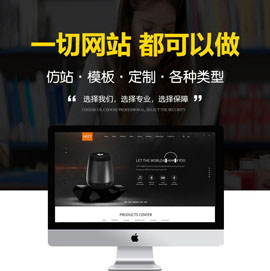(三)android中Toast的使用-创新互联

A toast provides simple feedback about an operation in a small popup. It only fills the amount of space required for the message and the current activity remains visible and interactive. For example, navigating away from an email before you send it triggers a "Draft saved" toast to let you know that you can continue editing later. Toasts automatically disappear after a timeout.

二、The Basics
First, instantiate a Toast object with one of the makeText() methods. This method takes three parameters: the application Context, the text message, and the duration for the toast. It returns a properly initialized Toast object. You can display the toast notification with show(), as shown in the following example:
Context context = getApplicationContext();
CharSequence text= "Hello toast!";
int duration = Toast.LENGTH_SHORT;
Toast toast= Toast.makeText(context, text, duration);
toast.show();This example demonstrates everything you need for most toast notifications. You should rarely need anything else. You may, however, want to position the toast differently or even use your own layout instead of a simple text message. The following sections describe how you can do these things.
You can also chain your methods and avoid holding on to the Toast object, like this:
Toast.makeText(context, text, duration).show();三、Positioning your Toast
A standard toast notification appears near the bottom of the screen, centered horizontally. You can change this position with the setGravity(int, int, int) method. This accepts three parameters: aGravity constant, an x-position offset, and a y-position offset.
For example, if you decide that the toast should appear in the top-left corner, you can set the gravity like this:
toast.setGravity(Gravity.TOP|Gravity.LEFT, 0, 0);f you want to nudge the position to the right, increase the value of the second parameter. To nudge it down, increase the value of the last parameter.
四、Creating a Custom Toast View
If a simple text message isn't enough, you can create a customized layout for your toast notification. To create a custom layout, define a View layout, in XML or in your application code, and pass the root View object to the setView(View) method.
For example, you can create the layout for the toast visible in the screenshot to the right with the following XML (saved as toast_layout.xml):
<LinearLayoutxmlns:android="http://schemas.android.com/apk/res/android"
android:id="@+id/toast_layout_root"
android:orientation="horizontal"
android:layout_width="fill_parent"
android:layout_height="fill_parent"
android:padding="8dp"
android:background="#DAAA" > <ImageViewandroid:src="@drawable/droid"
android:layout_width="wrap_content"
android:layout_height="wrap_content"
android:layout_marginRight="8dp" /> <TextViewandroid:id="@+id/text"
android:layout_width="wrap_content"
android:layout_height="wrap_content"
android:textColor="#FFF" /></LinearLayout>Notice that the ID of the LinearLayout element is "toast_layout_root". You must use this ID to inflate the layout from the XML, as shown here:
LayoutInflater inflater = getLayoutInflater();
View layout= inflater.inflate(R.layout.custom_toast,
(ViewGroup) findViewById(R.id.toast_layout_root));
TextView text= (TextView) layout.findViewById(R.id.text);
text.setText("This is a custom toast");
Toast toast= new Toast(getApplicationContext());
toast.setGravity(Gravity.CENTER_VERTICAL,0, 0);
toast.setDuration(Toast.LENGTH_LONG);
toast.setView(layout);
toast.show(); First, retrieve the LayoutInflater with getLayoutInflater() (or getSystemService()), and then inflate the layout from XML using inflate(int, ViewGroup). The first parameter is the layout resource ID and the second is the root View. You can use this inflated layout to find more View objects in the layout, so now capture and define the content for the ImageView and TextView elements. Finally, create a new Toast with Toast(Context) and set some properties of the toast, such as the gravity and duration. Then call setView(View) and pass it the inflated layout. You can now display the toast with your custom layout by calling show().
Note: Do not use the public constructor for a Toast unless you are going to define the layout withsetView(View). If you do not have a custom layout to use, you must use makeText(Context, int, int) to create the Toast.
分享标题:(三)android中Toast的使用-创新互联
当前地址:https://www.cdcxhl.com/article36/dsddpg.html
成都网站建设公司_创新互联,为您提供网站导航、动态网站、商城网站、网站制作、企业网站制作、网站建设
声明:本网站发布的内容(图片、视频和文字)以用户投稿、用户转载内容为主,如果涉及侵权请尽快告知,我们将会在第一时间删除。文章观点不代表本网站立场,如需处理请联系客服。电话:028-86922220;邮箱:631063699@qq.com。内容未经允许不得转载,或转载时需注明来源: 创新互联

- 企业建网络营销网站前一定要识破这些陷阱 2022-08-29
- 成都小程序定制有哪些商业价值 2022-07-28
- 网站建设公司的免费营销模式 2022-06-09
- 网站优化中如何对关键词进行选择 2022-09-18
- 提升网站整站权重的意义 2016-12-18
- 菏泽信息推广枣庄网站推广「邵阳seo」邵阳网站优化分享网站文章对排名有什么影响 2023-01-11
- 广州舞蹈社交APP软件开发 2023-02-09
- 基于电商平台的数据分析基本指标体系 2021-01-30
- 营销型网站都有什么特点 2021-10-04
- 网络推广全方案(珍藏版) 2022-12-08
- 他来了,开了一场关于如何变“黑”的分享会 2022-08-18
- 网站优化中404页面的作用和如何设置 2021-04-13